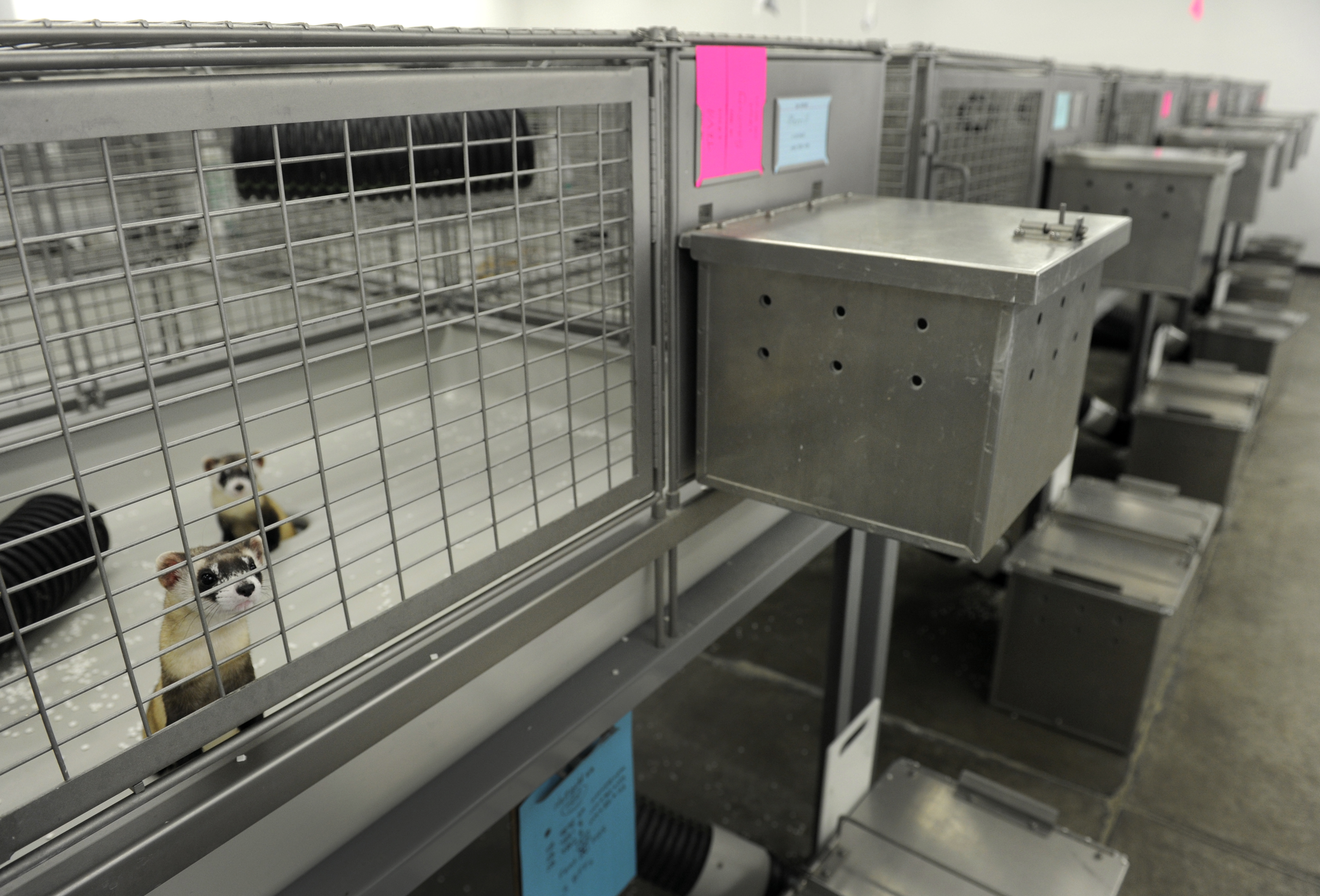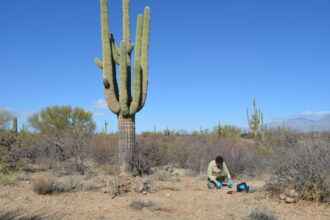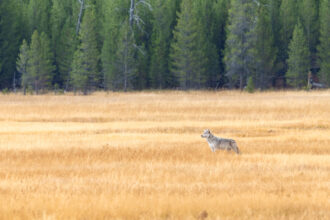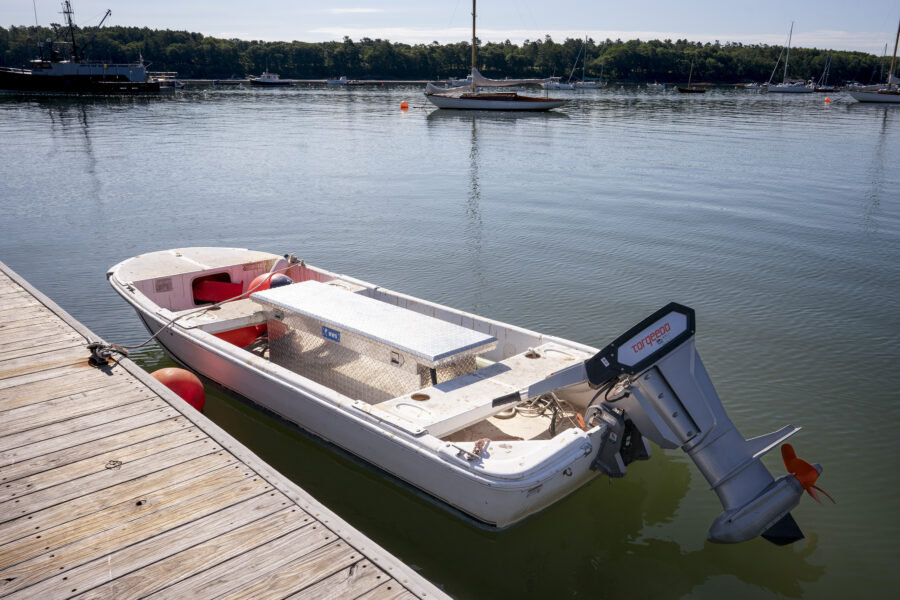In the United States, the government shutdown is about to stretch into its third week as Republicans and Democrats continue to disagree on a bill to fund government services.
With many government programs on hold and at least 600,000 federal employees furloughed, the shutdown is having ripple effects on environmental work across the country.
For some government-run activities—from fire mitigation to endangered species recovery—timing is crucial, and even a short delay could have profound long-term impacts, experts say. On Monday, Republican House Speaker Mike Johnson said that the freeze could become the longest in history.
Ferrets in Limbo: Known for their bandit-like masks, black-footed ferrets once scampered the North American prairies in the hundreds of thousands. But throughout the mid-20th century, farmers converted widespread swaths of prairies into agricultural land, diminishing ferret habitat while disease and hunting wiped out colonies of prairie dogs, the carnivore’s primary food source.
Now, estimates suggest less than 500 wild black-footed ferrets remain in North America, making them one of the most endangered animals on the continent. In recent decades, the U.S. government, zoos and nonprofits have launched conservation projects to rebuild populations, primarily through captive breeding programs, including one at the National Black-Footed Ferret Conservation Center in northern Colorado, which is run by the U.S. Fish and Wildlife Service. This species is crucial to the health of the Great Plains and helps manage prairie dog populations, which can be a nuisance to farmers.
About 400 black-footed ferrets at captive breeding facilities are waiting to be released into the wild, according to the nonprofit Defenders of Wildlife, a partner on the ferret recovery plan. But that may not happen anytime soon as employees critical to the project are furloughed and travel restrictions hinder planned releases, the group says.
The timing of this delay is particularly bad because fall is when ferrets in the wild establish territory, learn to hunt and find mates. This means that captive-bred individuals—already at a disadvantage—may struggle even further to adapt to wild conditions and prepare for the harsh winter months, according to Chamois Andersen, who works on the ferret program at Defenders of Wildlife.
“This is the time to release them in the wild so they can hone in those skills while prairie dogs are still active,” she told me. “We’re giving these captive-bred ferrets the best chance of survival … if we release them in October [or] November. If we have to wait or if that schedule is altered or ferrets remain in captivity, we’ve lost that window.”
This setback comes after the Trump administration fired several employees at the National Black-Footed Ferret Conservation Center and restricted funding for the species’ conservation earlier this year, WyoFile and the Powell Tribune report. With ferrets in such dire straits, just one season without successful integration of captive-bred individuals could be catastrophic, Andersen said.
“It’s very serious issues before the Congress and the administration, but why hold hostage our endangered species that are also critical to our natural systems that we rely on as humans also for our health and well-being?” she said.
I asked the Fish and Wildlife Service who is now taking care of the ferrets and how delays could affect the program’s success, but the agency did not respond in time for publication.
Update: The agency has received an exemption that will allow it to proceed with black-footed ferret releases as planned, despite the government shutdown, according to the nonprofit Defenders of Wildlife, which was notified of this on Oct. 17.
Public Land Predicaments: Wildfires have burned through more than 4.7 million acres of the U.S. this year so far, according to the National Interagency Fire Center. But sometimes, the key to preventing more catastrophic blazes is by fighting fire with fire. During colder, wetter months like October and November—when fires are less likely to rage out of control—government agencies work with local communities and tribes to practice more controlled burns to reduce dead vegetation and brush that could fuel future infernos.
In an emailed comment to Inside Climate News, a Forest Service spokesperson said that prescribed “fire planning continues as normal with no interruptions and will be implemented as burning conditions are suitable.”
However, news reports from The Bulletin of Bend, Oregon, this week and High Country News last week say that the government shutdown could delay these controlled burns, leaving fire-prone regions vulnerable. Though wildland firefighters have mostly been deemed essential workers and continue to serve during the shutdown, thousands of employees in the U.S. Forest Service are furloughed, including those who may help plan or manage burns and are pulled into wildfire response when more staffing is needed.
“Prescribed burns and other hazardous fuels treatments are supposed to happen in the cooler, wetter months like October,” U.S. Sen. Ron Wyden (D-Ore.) told the Bulletin. “Instead, the needless shutdown inflicted by Donald Trump and his Republican fellow travelers who control Congress means that proven wildfire risk reduction strategy is derailed—despite communities counting on that work to stay safe.”
California Gov. Gavin Newsom’s office also expressed concerns over how delays could affect controlled burns and other wildfire mitigation efforts. On the Forest Service website, the agency has blamed “Radical Left Democrats” for the shutdown.
Meanwhile, the shutdown has thrown other activities on public lands, such as tourism, into disarray in some areas. Though much of the support staff is furloughed, national parks and forests have largely remained open throughout the shutdown, which could put visitors and resources at risk, my colleague Wyatt Myskow reports.
During the last federal shutdown in 2018, visitors reported overflowing toilets, illegal off-road driving through fragile habitats and deforestation. In the past two weeks, California’s Yosemite National Park has already seen an uptick in illegal camping, unauthorized hiking and BASE jumping, Outside reports. But it’s not just safety that could be at risk. Local communities around national parks and forests depend on tourism for much of their income, so any threats to visitation could have adverse economic impacts, especially during popular months like October and November.
“A government shutdown is never a good thing for national parks,” Lincoln Larson, an associate professor of parks, recreation and tourism management at North Carolina State University, said in a recent Q&A. “If shutdowns happen during peak tourism seasons (for example, leaf-peeping season in western North Carolina), the economic impacts can be even more devastating and leave a lasting effect on the social and cultural landscape of an area.”
More Top Climate News
More than 60 people in Mexico have died due to extreme rainfall and flooding in parts of the Gulf Coast and central states, Félix Márquez reports for The Associated Press. The country deployed around 10,000 troops to help find survivors and deliver food, but President Claudia Sheinbaum said it could still take days to gain access to some areas. The storm hit the oil town of Poza Rica and flooded facilities, pouring the fossil fuel into the ocean and homes in the area.
“Never before has it been tarred before like that,” Poza Rica resident Lilia Ramírez told The Associated Press after oil polluted her home.
The Trump administration plans to slash funding for Nathaniel B. Palmer, the sole U.S. icebreaker dedicated to Antarctic research, but other recently announced efforts could help fill in some of the gaps. The British Antarctic Survey RRS Sir David Attenborough will soon set out on a voyage to study climate issues in the polar region, from whale population declines to ice melt, Phys.org reports. Meanwhile, Schmidt Sciences—a foundation founded by the former CEO of Google—announced funding for drone boats to research remote Antarctic areas that cannot be reached easily by human-run crews, Wired reports.
A new United Nations report found that annual spending to restore forests needs to triple to $300 billion by the end of the century to meet climate and conservation goals, Sachi Kitajima Mulkey reports for The New York Times. Around 25 million acres of forest are destroyed each year due to human activities like logging and wildfires, according to the report. As climate change accelerates, fires and droughts are set to become more severe, which could result in more forest loss. Decreasing extractive industries and increasing funding for forest protection, particularly from wealthy countries such as China and the United States, could help stem these declines.
Postcard from … the Caribbean
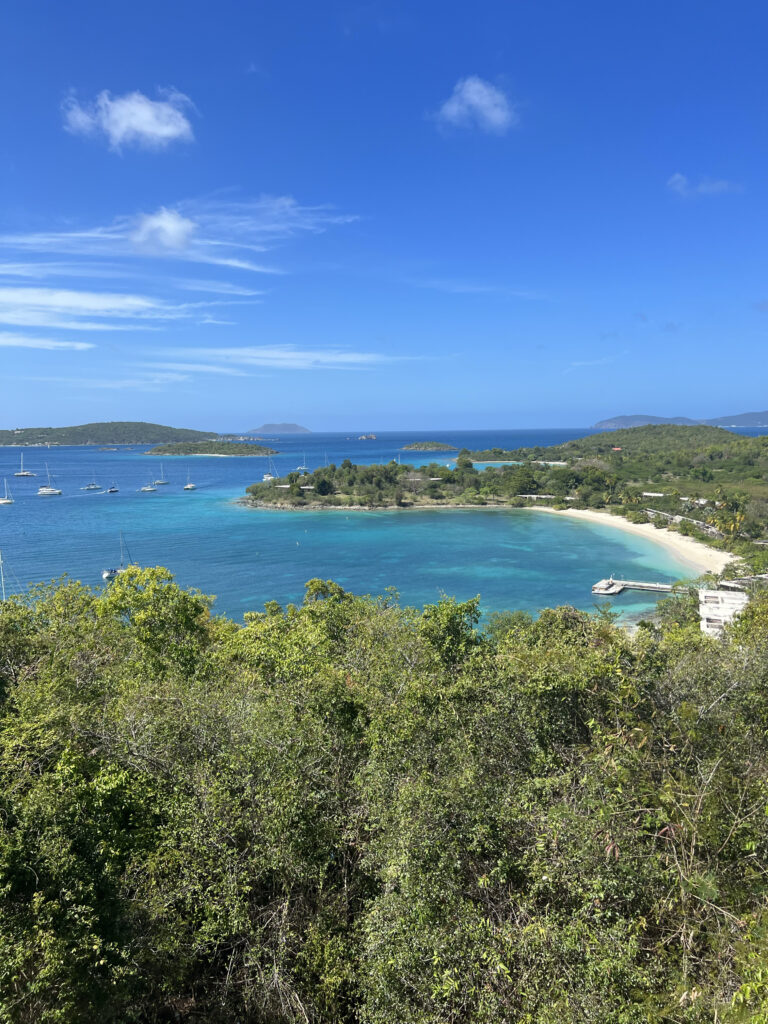
This week’s postcard is courtesy of my very own sister, Jordan! She lives in Philadelphia, and is the ultimate city girl. But when I told her about our new feature, she was quick to send along a nature memory from a trip years ago to St. John, which is part of the U.S. Virgin Islands.
“Before my first child was born, we were able to escape to what was arguably the most breathtaking island I’d ever visited,” she said. “I was seven months pregnant, but felt light as a feather snorkeling among sea turtles and stingrays, hiking the steep terrain, and crossing paths with hermit crabs as big as my fist. Three kids later, I don’t get as many opportunities to sit back and soak up the wonder of nature, but I love looking back on these moments of peace before the chaos of urban parenthood.”
Today’s Climate readers, please keep sending in your photos for our “Postcards From” feature to [email protected]. We love seeing how you all interact with nature, whether birding in your backyard or hiking on vacation.
This piece was updated on Oct. 17, 2025, with new information about black-footed ferret releases.
About This Story
Perhaps you noticed: This story, like all the news we publish, is free to read. That’s because Inside Climate News is a 501c3 nonprofit organization. We do not charge a subscription fee, lock our news behind a paywall, or clutter our website with ads. We make our news on climate and the environment freely available to you and anyone who wants it.
That’s not all. We also share our news for free with scores of other media organizations around the country. Many of them can’t afford to do environmental journalism of their own. We’ve built bureaus from coast to coast to report local stories, collaborate with local newsrooms and co-publish articles so that this vital work is shared as widely as possible.
Two of us launched ICN in 2007. Six years later we earned a Pulitzer Prize for National Reporting, and now we run the oldest and largest dedicated climate newsroom in the nation. We tell the story in all its complexity. We hold polluters accountable. We expose environmental injustice. We debunk misinformation. We scrutinize solutions and inspire action.
Donations from readers like you fund every aspect of what we do. If you don’t already, will you support our ongoing work, our reporting on the biggest crisis facing our planet, and help us reach even more readers in more places?
Please take a moment to make a tax-deductible donation. Every one of them makes a difference.
Thank you,


